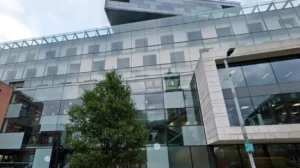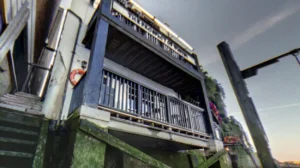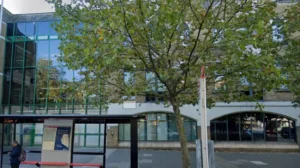Key Points
- Over 30 primary schools in London are scheduled to close or merge imminently, sparking a crisis in the capital’s education sector.
- The Hackney area is significantly affected, with multiple primary schools facing closure or merger.
- The closures are attributed to financial pressures, declining pupil numbers, and strategic restructuring by local authorities.
- Parents, teachers, and local officials express concern over the impact on communities and children’s education.
- Authorities argue that mergers and closures aim to improve educational standards and resource allocation.
- The crisis reflects wider challenges in London’s education system amid demographic changes and funding constraints.
What is the scale of London’s primary school closures crisis?
London is facing a severe crisis in its primary education sector, with more than 30 primary schools across the city set to close or merge within the coming weeks. This wave of closures and mergers represents one of the most significant restructurings in recent years, affecting numerous communities and raising urgent questions about the future of education provision in the capital. The crisis stems from a combination of financial difficulties, falling pupil rolls, and strategic decisions by local councils to consolidate resources and improve educational outcomes.
According to reports compiled from various local media and education sources, the closures are not isolated incidents but part of a broader pattern affecting several London boroughs, including Hackney, which is among the most impacted areas. The scale of the crisis has alarmed parents, educators, and local officials alike, who warn of the disruption to children’s education and the potential loss of community hubs that schools represent.
How is Hackney specifically affected by the school closures?
Hackney, a borough known for its diverse population and vibrant communities, is experiencing a particularly acute impact from the school closures crisis. Multiple primary schools in Hackney are slated for closure or merger, reflecting the borough’s struggle with balancing educational demand and financial sustainability.
Local education authorities in Hackney have cited falling pupil numbers in certain areas and the need to optimise resources as primary reasons for the planned closures. However, parents and community leaders have voiced strong opposition, highlighting concerns about longer travel distances for children, overcrowding in remaining schools, and the loss of local educational institutions that serve as community anchors.
As reported by education correspondents covering London’s school sector, Hackney’s closures are emblematic of the wider pressures facing urban schools, where demographic shifts and funding cuts force difficult decisions. The borough’s education officials maintain that the mergers and closures are necessary to ensure that remaining schools can provide high-quality education with adequate facilities and staffing.
What are the main reasons behind the closures and mergers?
The driving factors behind the closures and mergers of London’s primary schools are multifaceted:
- Financial Pressures: Many schools are struggling with reduced funding allocations amid rising costs, making it financially unviable to maintain under-enrolled schools.
- Declining Pupil Numbers: Certain areas have seen a drop in the number of primary-age children, leading to underutilised school capacity.
- Strategic Restructuring: Local authorities are pursuing mergers and closures to consolidate resources, improve educational standards, and better manage school estates.
- Government Policies: Changes in education funding formulas and policies have intensified pressures on local councils to rationalise school provision.
Education analysts quoted by London-based media emphasise that while closures are unpopular, they are sometimes necessary to protect the overall quality and sustainability of education in the area.
What are the reactions from parents, teachers, and local officials?
The announcement of school closures and mergers has elicited a range of responses:
- Parents: Many parents express frustration and anxiety over the impact on their children’s schooling, fearing disruption, longer commutes, and loss of community ties.
- Teachers and Staff: Educators worry about job security and the challenges of integrating students and staff from different schools during mergers.
- Local Officials: Councillors and education leaders acknowledge the difficulties but argue that the decisions are made with the long-term interests of pupils and communities in mind.
Community meetings and protests have been reported in affected areas, with calls for greater transparency and alternative solutions to closures. However, education authorities maintain that extensive consultations have been conducted and that the closures are part of a necessary adjustment to changing circumstances.
How will the closures and mergers impact children and communities?
The immediate impact of the school closures and mergers will be felt most acutely by children and their families. Concerns include:
- Increased travel times and logistical challenges for families.
- Potential overcrowding in receiving schools.
- Loss of familiar school environments and community centres.
- Emotional and social disruption for pupils transitioning to new schools.
Community leaders warn that beyond education, schools serve as vital social hubs, and their closure can weaken neighbourhood cohesion. Conversely, proponents argue that better-resourced, larger schools can offer improved facilities, broader curricula, and more extracurricular opportunities.
What are the authorities’ perspectives on the school closures crisis?
Local education authorities and councils stress that the closures and mergers are difficult but necessary decisions aimed at:
- Ensuring financial sustainability of the education system.
- Improving educational outcomes through better resource allocation.
- Maintaining safe and effective learning environments.
- Adapting to demographic changes and pupil distribution.
Officials have committed to supporting affected pupils and families through the transition, including transport arrangements and integration programmes. They also highlight that the restructuring aligns with broader strategic plans for education in London.
What does this crisis reveal about the wider challenges in London’s education system?
The school closures crisis in London, particularly in Hackney, underscores several systemic challenges:
- The tension between funding constraints and rising costs in urban education.
- Demographic shifts leading to uneven demand for school places.
- The complexity of balancing community needs with educational quality.
- The impact of national policy changes on local education provision.
Experts suggest that without significant investment and policy reform, such closures and mergers may become more frequent, affecting the stability and accessibility of education in London.








